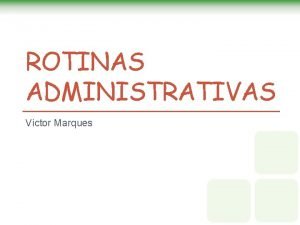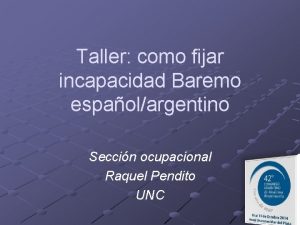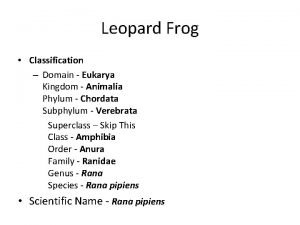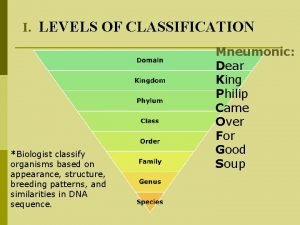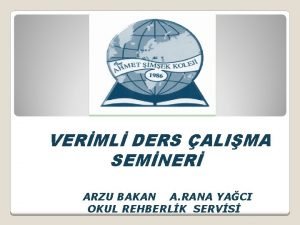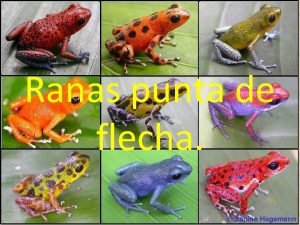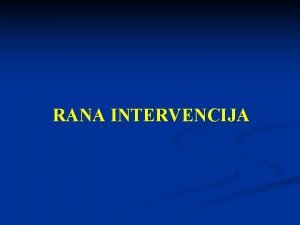Common frog Classification The Common Frog Rana temporaria








- Slides: 8

Common frog

Classification The Common Frog, Rana temporaria also known as the European Common Frog or European Common Brown Frog is found throughout much of Europe as far north as well north of the Arctic Circle in Scandinavia and as far east as the Urals, except for most of Iberia, southern Italy, and the southern Balkans. Kingdom: Animalia Phylum: Chordata Class: Amphibia Order: Anura Family: Ranidae Genus: Rana Species: R. temporaria Adult Common Frogs will feed on any invertebrate of a suitable size, although they do not feed at all during the breeding season. Foods include insects (especially flies), snails, slugs and worms. Their feeding habits change significantly throughout their lives; whereas older frogs will feed only on land, younger frogs will also feed in the water. Tadpoles are mostly herbivores, feeding on algae, detritus and some plants, although they will also eat other animals in small amounts. Outside the breeding season, common frogs live a solitary life in damp places near ponds or marshes or in long grass. They are normally active for much of the year, only hibernating in the coldest months, sometime between August and early June depending on latitude and altitude. In the most northern extremities of their range they may be trapped under ice for up to nine months of the year, but recent studies have shown that in these conditions they may be relatively active at temperatures close to freezing. In the British Isles, common frogs typically hibernate from late October to January. They will re-emerge as early as February if conditions are favourable, and migrate to bodies of water such as garden ponds to spawn. Where conditions are harsher, such as in the Alps, they emerge as late as early June. Common frogs hibernate in running waters, muddy burrows, or in layers of decaying leaves and mud at the bottom of ponds. The oxygen uptake through the skin suffices to sustain the needs of the cold and motionless frogs during hibernation. http: //en. wikipedia. org/wiki/Common_Frog


Dorsal view of the common frog 1. 2. 3. 4. 6. 5. 7. 8. 1. Brow spot 2. Manus 3. External nares 4. Nictating membrane of the eye 9. 10. 11. 12. 5. Forelimb 6. Tympanic membrane 7. Antebrachium 8. Brachium 9. Trunk 10. Dorsolateral dermal plica 11. Thigh 12. Anus 13. Crus 14. Pes 15. Toes 15.



The organs of the common frog, ventral view 1. Tongue 2. Mouth 3. Oesophagus 4. Stomach 5. Spleen 6. Small intestine 7. Large intestine 8. Bladder 9. Ventral abdominal vein 10. Dorsal aorta 11. Kidney 12. Liver 13. Heart 14. Lung 15. Truncus arteriosus 16. Bulbus arteriosus 17. Duodenum 18. Pylorus


